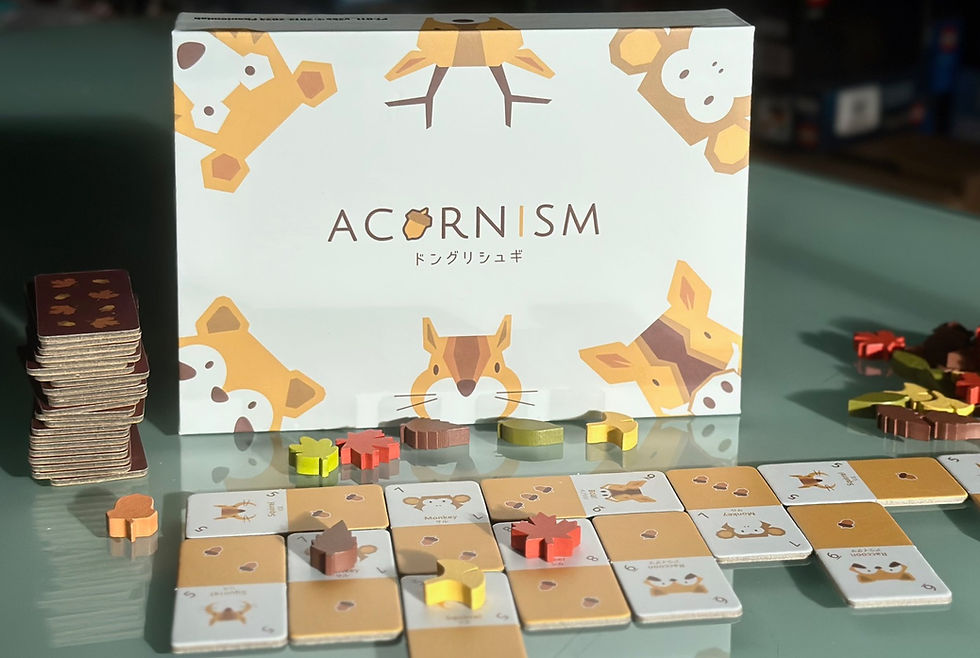Tang Garden
- Selwyn Ward

- Jun 4, 2020
- 2 min read
Updated: Oct 24, 2020
In Tang Garden, 2–4 players are building gardens to impress the Chinese Emperor Xuanzong. You'll be laying out tiles and scoring elements (greenery, water, rock) every time a tile is laid that matches up with that element or when an area is completed (ie: when a tile is laid that encloses a lake or area of stone or vegetation). You'll be placing out 'decorations' (fish, trees, bridges and pavilions) and you'll be collecting characters for their individual skills and to score when they are placed out on the board.

Tho' the tile placement will seem familiar to anyone who has ever played any version of Carcassonne (Hans im Gluck/Rio Grande), Tang Garden takes this game mechanic to the next level. The 'decorations' allow for set collection bonuses but it is the playing and positioning of the characters that offer the most scope for strategy and tactics. In keeping with the game's theme, these reward players according to the magnificence of what they see. That means you need to position characters so that certain elements and decorations are in their line of sight...
Tang Garden is a game where there are a lot of interlocking parts but it's really not hard to learn or play. You can frustrate other players by laying tiles in spots where they'd hoped to build but this game is much more zen than cutthroat competitive. You'll find it very satisfying laying out your garden to make the most of its scoring potential and you won't begrudge the success of other players. The game lends itself well to solitaire play, and there are solo rules included, tho' these inevitably differ somewhat from the 2–4 person game.
Some of the icons used in the game are rather small but the iconography itself is clear. What immediately stands out about Tang Garden is the quality of production. Matthew Mizak has done a fantastic job with the artwork and it is especially pleasing to be able to place out the three-dimensional 'decorations': the little bridges, the pavilions, and the cardboard trees that look for all the world like they've self-seeded from Photosynthesis (Blue Orange). Tang Garden is a game where the theme is aesthetics, so it's only right and proper that aesthetics should feature so prominently in its design.
If you get as swept up as we've been been in the look, feel and theme of this game, it may come as a surprise to learn that its designers hail from Italy rather than China. Tang Garden is designed by Francesco Testini and Pierluca Zizzi. The game was originally published by ThunderGryph, who initially launched it on Kickstarter, but Tang Garden is now being released in English and French as a Lucky Duck game. You should be able to find it now on retail shelves: the perfect game to play as you look out on your humble backyard or undulating acres on a warm summer evening.
(Review by Selwyn Ward)




